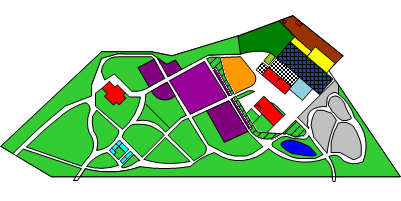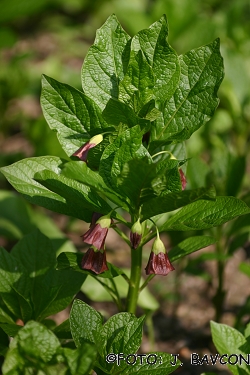



| LATEINISCHER NAME | Scopolia carniolica | |
|---|---|---|
| AUTOR | Jacq. | |
| SLOVENIAN NAMEN | kranjski volčič | |
| DEUTSCHEN NAMEN | ||
| GATTUNG | Scopolia | |
| FAMILIE (LATEIN) | Solanaceae | |
| FAMILIE (SLOVENIAN) | razhudnikovke | |
| ORDNUNG | Solanales | |
| KLASSE | Magnoliopsida | |
| STAMM | Magnoliophyta | |
| REICH | Plantae | |
| BLÜEZEIT | april - mai | |
| PRÄVALENZ | Sr. in JV Evropa | |
| ROTE LISTE | ||
| CITES | ||
| PFLANZEN WACHSEN IN ( | ||
 | ||
| PFLANZEN BILD |
|---|
 |
| Scopolia carniolica |
| Scopolia (Scopolia carniolica) is a plant blooming in beech forests in spring. At first a small plant, it quickly develops into a lush herb with nodding brown flowers hanging from under the leaves. The plant was brought to the world of botany from the area of the town of Idrija, where it was discovered by the town's first doctor, Johannes Antonius Scopoli (1723-1788). It was described even earlier, by Pietro Andrea Mathioli (1500-1577). Scopoli sent its seeds along with the first edition of his seminal work on Carniola's native flora, Flora Carniolica (1760), to the Swedish botanist Carl von Linné. In honour of Scopoli, Linné named the plant Hyoscyamus scopolia. In 1764, an all new genus, Scopola, was introduced in Scopoli's honour by the Viennese botanist Nicolaus Joseph von Jacquin. In the second edition of Scopoli's Flora Carniolica (1772), the plant was already classified as a species of the genus Scopola. Since then, its name has changed only slightly, into Scopolia carniolica. Text: J. Bavcon |
ETABLIERUNG MIT TRADITION UNS WISSEN SEIT 1810

BOTANISCHER GARTEN FEIERT - BIODIVERSITÄTSWÄCHTER FÜR 215 JAHRE!